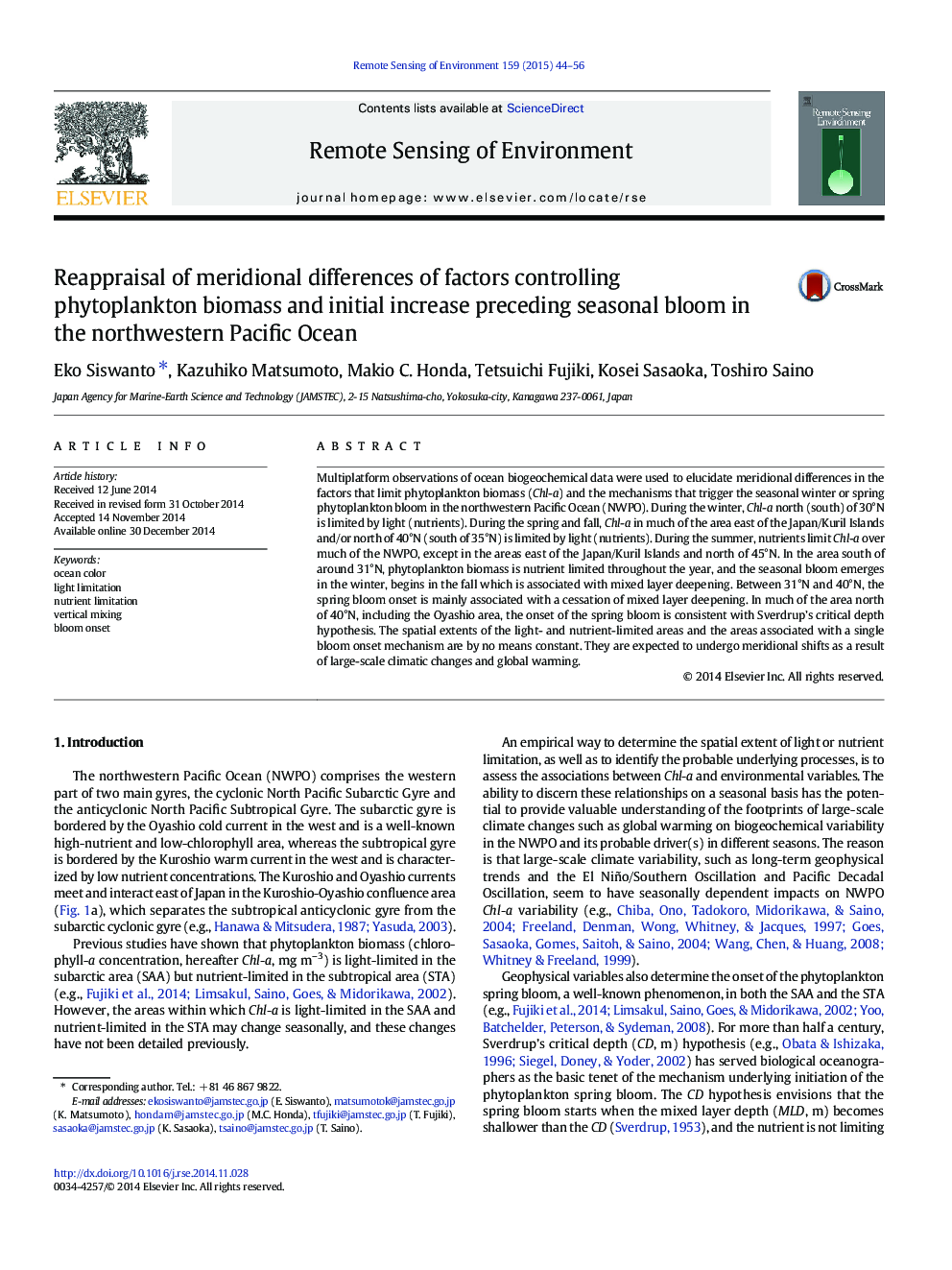| Article ID | Journal | Published Year | Pages | File Type |
|---|---|---|---|---|
| 6346165 | Remote Sensing of Environment | 2015 | 13 Pages |
Abstract
Multiplatform observations of ocean biogeochemical data were used to elucidate meridional differences in the factors that limit phytoplankton biomass (Chl-a) and the mechanisms that trigger the seasonal winter or spring phytoplankton bloom in the northwestern Pacific Ocean (NWPO). During the winter, Chl-a north (south) of 30°N is limited by light (nutrients). During the spring and fall, Chl-a in much of the area east of the Japan/Kuril Islands and/or north of 40°N (south of 35°N) is limited by light (nutrients). During the summer, nutrients limit Chl-a over much of the NWPO, except in the areas east of the Japan/Kuril Islands and north of 45°N. In the area south of around 31°N, phytoplankton biomass is nutrient limited throughout the year, and the seasonal bloom emerges in the winter, begins in the fall which is associated with mixed layer deepening. Between 31°N and 40°N, the spring bloom onset is mainly associated with a cessation of mixed layer deepening. In much of the area north of 40°N, including the Oyashio area, the onset of the spring bloom is consistent with Sverdrup's critical depth hypothesis. The spatial extents of the light- and nutrient-limited areas and the areas associated with a single bloom onset mechanism are by no means constant. They are expected to undergo meridional shifts as a result of large-scale climatic changes and global warming.
Related Topics
Physical Sciences and Engineering
Earth and Planetary Sciences
Computers in Earth Sciences
Authors
Eko Siswanto, Kazuhiko Matsumoto, Makio C. Honda, Tetsuichi Fujiki, Kosei Sasaoka, Toshiro Saino,
